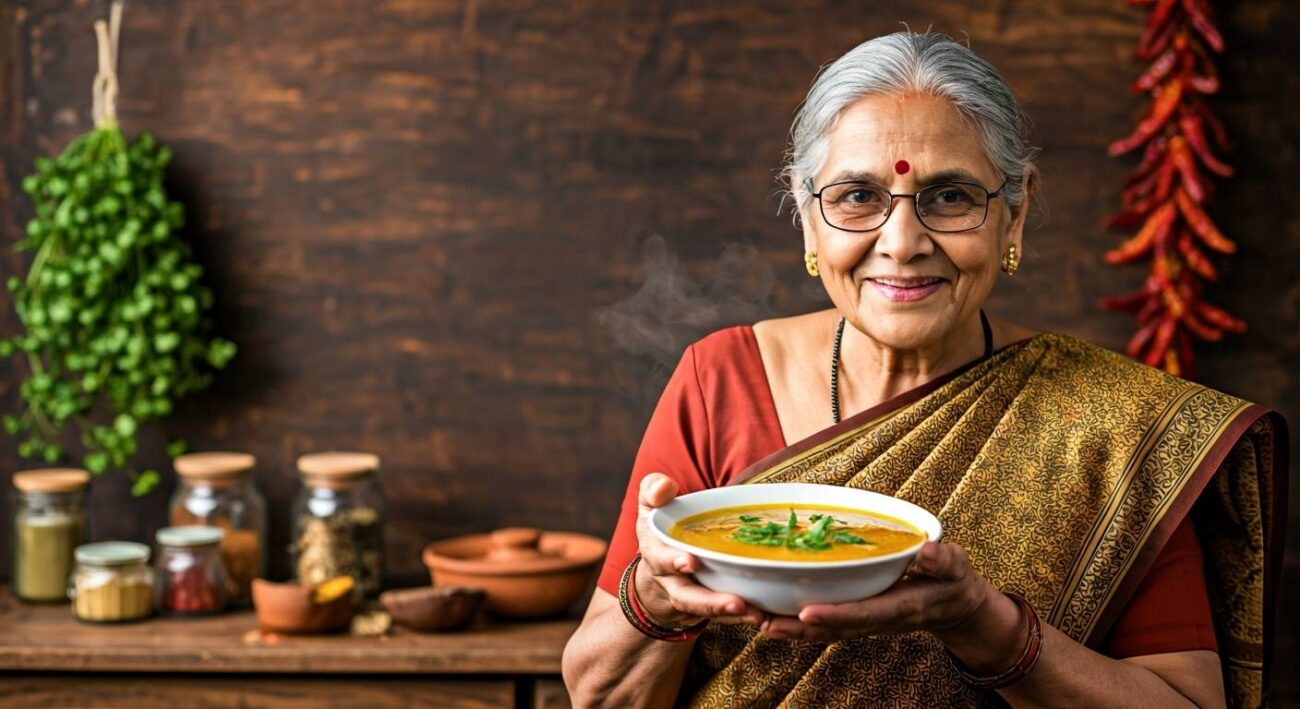Why Traditional Recipes Are Still the Best.

Why Grandma’s Recipes Still Matter Today
In today’s fast-paced world, it’s easy to get caught up in fast food and ready-to-eat meals. But if you pause and look back, you’ll find that traditional foods—recipes passed down by our parents and grandparents—are not only full of flavor, but also full of health benefits. These dishes have been part of our culture for generations for good reason. Let’s explore why traditional food still matters—and how it can help us stay healthy, connected, and happy.
1. Packed with Natural Goodness
Traditional dishes are often made from whole, natural ingredients—grains, pulses, vegetables, spices, herbs, and healthy fats. These ingredients give our body the nutrients it truly needs. Unlike processed food, traditional meals don’t contain artificial flavors, colors, or preservatives.
Example:
Khichdi – A comforting mix of rice and lentils. It’s light on the stomach, rich in protein, and great for digestion.
Rasam – A tangy South Indian soup made with tomatoes, tamarind, and spices. It’s full of antioxidants and can help with colds and digestion.
2. Good for Digestion
Many traditional meals are naturally balanced with fiber, spices, and fermented foods that are good for the gut. Spices like cumin, ginger, turmeric, and ajwain (carom seeds) not only add taste but also help your stomach work better.
Example:
Buttermilk (chaas) – A refreshing drink made with yogurt, water, and spices. It cools the stomach and aids digestion, especially in hot weather.
Idli & Dosa – These fermented South Indian foods are light, tasty, and help keep your gut healthy.
3. Boosts Immunity
Traditional spices and cooking methods often include natural remedies that support the immune system. Our ancestors knew how to use food as medicine!
Example:
Turmeric milk (haldi doodh) – Now called “golden milk” around the world, this ancient remedy is known to fight inflammation and boost immunity.
Ginger, garlic, and pepper – These ingredients are often used in curries and home remedies for colds and coughs.
4. Builds a Strong Connection to Culture and Family
Food is not just about nutrition—it’s about memories, emotions, and culture. Traditional dishes carry the taste of festivals, family dinners, and celebrations. Cooking these meals helps us stay connected to our roots and pass on traditions to the next generation.
Example:
Sambar on Sundays, biryani for celebrations, pongal for Pongal festival—these meals are filled with emotions and meaning, not just ingredients.
5. Budget-Friendly and Sustainable
Traditional recipes usually make the best use of local, seasonal, and affordable ingredients. These dishes are not only good for your body but also for your wallet and the planet.
Example:
Seasonal vegetable curries, millet-based dishes, and homemade pickles are made from ingredients that are often available right in your backyard or local market.
A Few Traditional Superfoods to Try
| Food | Benefit |
|---|---|
| Ragi (finger millet) | Rich in calcium and fiber; good for bones and digestion |
| Turmeric | Anti-inflammatory and helps immunity |
| Amla (Indian gooseberry) | High in Vitamin C; great for skin and immunity |
| Ghee | Supports digestion and brain health when used in moderation |
| Curry leaves | Good for hair, skin, and digestion |
| Moong dal | Easy to digest and rich in protein |
Bringing Tradition Back into the Kitchen
At Pungu’s Kitchen, we believe in honoring old recipes while adding modern touches. Bringing back traditional dishes doesn’t have to be boring or complicated. Try:
Adding a traditional side dish to your regular meals (like thoran, kootu, or chutney)
Using age-old spices in new recipes
Sharing a favorite childhood recipe with your kids or friends
Cooking one traditional meal every weekend
Final Thoughts
Traditional food isn’t just something “from the past.” It’s smart, healthy, and comforting. It tells stories, keeps us grounded, and gives our body the nourishment it truly needs. So next time you’re wondering what to cook—look back into your roots. The best answers might come from your grandmother’s kitchen.


You Might Also Like
Unlock the Umami Secret: Understanding MSG
Ajinomoto's most famous seasoning is AJI-NO-MOTO®, which is a monosodium glutamate (MSG) product. It is...
Preparing and Serving Kerala Sadya
Kerala, a southern state in India, is known for its rich cultural...
Exploring the Rich Flavors of UAE Cuisine
The United Arab Emirates (UAE) is a melting pot of cultures, and...
The Silent Cries We Ignore: Why Every Grain of Food Matters.
Millions of children around the world face hunger every day while food...
Kerala-Style Stuffed Squid (Koonthal Nirachathu) – A Coastal Delicacy Bursting with Flavor
A jewel of Kerala’s coastal cuisine, Koonthal Nirachathu—or Stuffed Masala Squid—brings together...
Embracing Wellness with Yoga and Good Food
In today's fast-paced world, maintaining balance in both mind and body is...